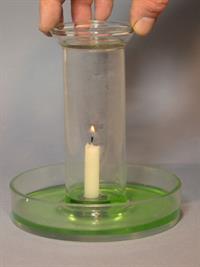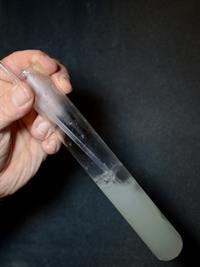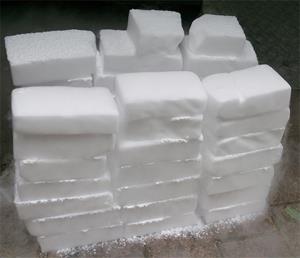PDF chapter test TRY NOW
Nitrogen was first discovered by a Scottish chemist, Daniel Rutherford. By placing the burning candle in an inverted bell jar, he removed oxygen and converted it into carbon-di-oxide.

Lighted candle covered with a glass jar
Then, he passed the remaining carbon-di-oxide through lime water to remove it.
Test for carbon-di-oxide in the air:

Lime water test
- Some lime water is poured into a glass tumbler.
- Air is blown into the solution through a straw.
- After a few minutes, a white precipitate is produced in the lime water, turning it into a milky white solution.
- This milky white solution shows the presence of carbon-di-oxide in the air.
Test for nitrogen:
After removing the carbon-di-oxide, neither a candle burned nor a plant breathed. This test confirmed that the remaining air neither contained oxygen nor carbon-di-oxide in it. The gas that remained was named ‘nitrogen’.
Use of nitrogen:
1. Nitrogen is used in the food packaging industry as it keeps the food fresh.

Potato chips packet
2. It also helps in the growth of plants and other living beings.

Growth of plants
Dry ice:
Carbon-di-oxide gas, when cooled to \(-570\ ^{o}C\), directly changes to solid without changing to its liquid state. The solid carbon-di-oxide is known as dry ice.

Dry ice
Use of dry ice:
It is a good refrigerating agent. It is mainly used in trucks or freight cars for refrigerating meat and fish while transporting them.
Reference:
https://upload.wikimedia.org/wikipedia/commons/b/b5/Dry_Ice_3.jpg
